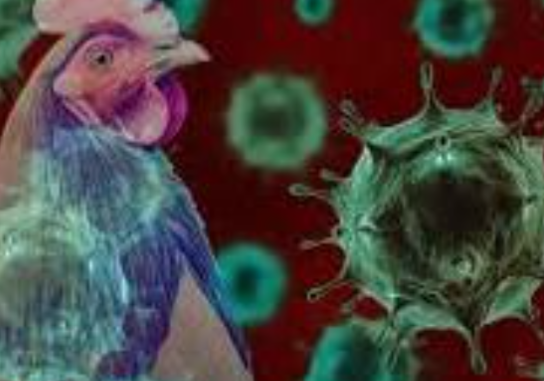
Engineered strain spread between ferrets, caused brain damage, and led to fatal organ failure, study shows
This post was published by Jon Fleetwood. Please visit his Substack and subscribe to support his work. Follow Jon: Instagram @realjonfleetwood / Twitter @JonMFleetwood / Facebook @realjonfleetwood
A government-funded lab in the Netherlands has created what researchers label a mutant strain of H5N1 bird flu virus, capable of spreading between mammals and causing 100% mortality under tightly controlled laboratory conditions, according to a new peer-reviewed study published Tuesday in the Journal of General Virology.
{snip}
They were introduced to ferrets either directly through nasal dosing or indirectly via housing alongside dosed animals.
All infected animals died.
“All inoculated ferrets from group B or C which were scheduled for necropsy on 14 DPI reached the HEP between 4 and 5 DPI. All three contact transmission ferrets (group D) reached the HEP on 7 DPI,” the study states.
The term “HEP,” or humane endpoint, refers to a lab-defined threshold of observable distress, including signs such as breathing difficulty and neurological tremors.
Animals reaching HEP were euthanized in accordance with protocol, following exposure to the material labeled as H5N1.
“HEPs were applied when the following criteria were met: a combined score of 4 for depression, breathing (dyspnoea) and neurological signs (e.g. tremors)… All animals that reached the HEP were euthanized and necropsied immediately.”
{snip}
Whether the observed deterioration resulted solely from the viral construct or from the experimental delivery mechanism and stress environment is not explored in the study.
Transmission Observed Under Experimental Conditions
According to the researchers, the material carrying the PB2-E627K mutation—widely associated in virology literature with adaptation to mammalian cells—was responsible for triggering symptoms in both directly dosed animals and those housed in contact with them.
“Transmission to co-housed ferrets was investigated in a group setting for the virus carrying the PB2-E627K mutation and caused neurological signs accompanied by prominent viral antigen staining in recipient ferrets compared to directly inoculated ferrets.”
{snip}
The construct appeared to accumulate in brain tissue and digestive-associated neural networks.
Researchers reported:
“Neuronal viral protein staining was detected in the olfactory bulb, trigeminal ganglion, cerebrum, cerebellum and neurons of the duodenal plexus.”
Still, the study does not evaluate whether these symptoms arose from the engineered sequence alone or from the host’s biological response to an abnormal exposure route.
Mutation Emerged In Vivo
In one case, the PB2-E627K mutation appeared during the process of what researchers describe as viral replication inside a host.
{snip}
Researchers did not address whether such mutations arise spontaneously in all biological contexts or are specific to the forced experimental exposure paradigm.
Construct Linked to Multi-Organ Inflammation
In addition to brain inflammation, widespread organ damage was reported in animals subjected to the viral material.
“[V]iral antigen expression was most prominent in nasal conchae, liver and pancreas” and was “expressed in neurons and microglia cells.”
The damage followed what the study describes as inoculation with a dose of “10^6 EID50 per millilitre,” a viral concentration unlikely to be encountered in natural settings.
{snip}
Authors Warn of Zoonotic Spillover
Despite the artificial context of exposure, the study’s authors stated:
“Transmission between mammals was shown… which underlines the zoonotic potential of current HPAI H5N1 viruses.”
The research was carried out at Wageningen Bioveterinary Research and supported by the Dutch Ministry of Agriculture, Nature and Food Quality (project numbers WOT-01-003-112, WOT-01-003-096, and KB-37-003-039).
All procedures were conducted inside biosafety level 3 (BSL-3) containment.
{snip}
Whether the construct labeled H5N1 would produce the same outcome in naturally occurring, unstressed mammalian environments remains a matter of interpretation—regardless of one’s view on viral causation.
At its core, the study highlights a growing concern: that governments are not merely preparing for the next pandemic—they are actively engineering the very constructs they claim necessitate mass vaccination, emergency powers, and sweeping lockdowns.
Congress, the White House, the Department of Energy, the FBI, and the CIA have acknowledged that a lab-related incident involving gain-of-function research linked to WIV is most likely the origin of the COVID-19 pandemic, raising concerns that ongoing experiments like these could trigger another one.
* Original Article:
https://modernity.news/2025/07/09/dutch-lab-breeds-100-fatal-mutant-bird-flu-that-spreads-between-mammals/